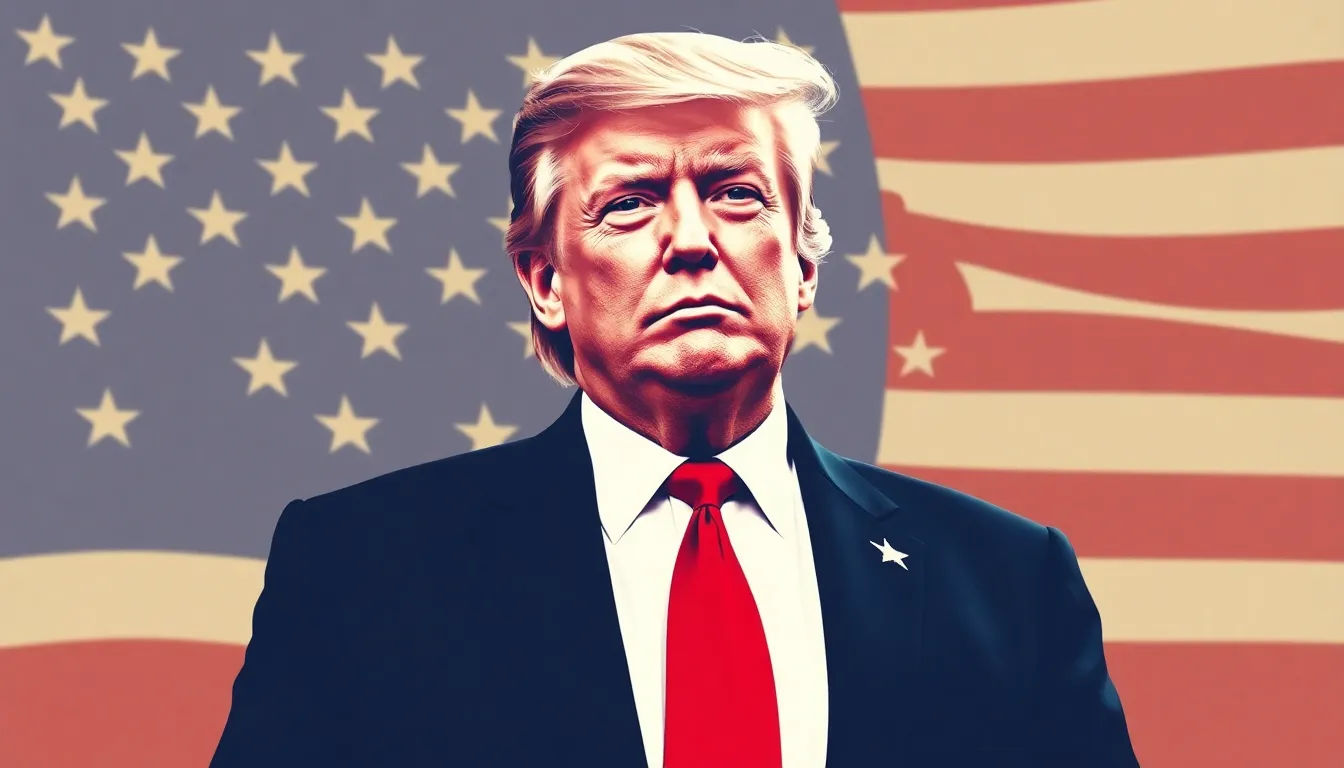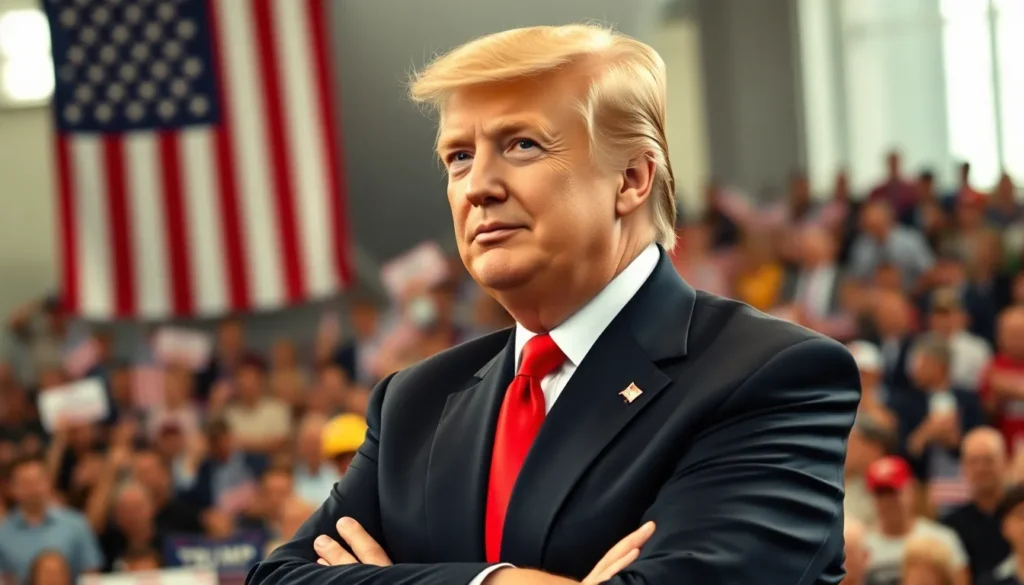Table of Contents
ToggleWhen it comes to Donald Trump, the question of his political allegiance can feel like a game of political hide-and-seek. Is he the quintessential Republican, waving the GOP flag with pride, or does he secretly have a Democrat card tucked away in his wallet? This perplexing puzzle has left many scratching their heads and reaching for their favorite conspiracy theories.
As Trump struts his stuff in the political arena, his unpredictable moves keep everyone guessing. His policies and rhetoric often blur the lines between the two parties, making it hard to pin him down. Whether he’s rallying the Republican base or courting disillusioned Democrats, one thing’s for sure: his political identity is as colorful as a box of crayons. Buckle up as we dive into the wild world of Trump’s political affiliations and see if we can finally crack the code.
Overview of Trump’s Political Identity
Donald Trump identifies primarily as a Republican, with his candidacy and policies aligning closely with conservative values. He gained the party’s nomination in 2016, leveraging support from traditional Republican bases while attracting new voters. His positions on immigration, tax reform, and deregulation resonate strongly with Republican ideology.
Mixed reactions from party members reflect the complexity of his identity. Some Republicans embrace his unconventional approach, believing it reinvigorates the party. Others criticize his departure from traditional conservative principles, noting his populist style and policies that occasionally align with Democratic views, such as tariffs on foreign goods.
Shifted perceptions regarding Trump’s political stances occur frequently. His policies around healthcare and social issues sometimes echo Democratic proposals, complicating his classification. Supporters argue he embodies a new Republican identity, while detractors claim he undermines the party’s core values.
Electoral outcomes provide insights into Trump’s influence. He retained significant voter support in the 2020 election, illustrating his role in reshaping the Republican electorate. His actions, including challenging election results, sparked discussions about loyalty and party affiliation.
Trump’s political identity remains a point of contention. He operates within the boundaries of the Republican Party yet consistently challenges conventional norms. Understanding this dynamic is essential for analyzing contemporary American politics and its evolving landscape.
Trump’s Early Political Affiliations

Understanding Trump’s early political affiliations provides insight into his complex political identity.
Initial Support for Democrats
Trump’s political journey began in the 1980s, marked by significant donations to Democratic candidates. He supported figures like former New York City Mayor Ed Koch and Bill Clinton during his presidency. Many viewed his financial contributions as a commitment to liberal causes. Additionally, Trump expressed progressive views on issues such as healthcare and social services. His ties to the Democratic Party created a perception of flexibility in his political beliefs. As a businessman, he often prioritized economic interests over strict party lines, leading to a diverse political landscape.
Shift to Republican Party
The late 1990s saw Trump pivot towards the Republican Party, influenced by rising conservative sentiments. His criticisms of the Clinton administration played a crucial role in this transition. Engaging with Republican figures, Trump began to align himself with conservative values. In 2016, Trump’s presidential campaign officially marked his departure from earlier affiliations. His focus on immigration and tax reform resonated with the party base, solidifying his position as a Republican. Engaging disillusioned voters further expanded his appeal within the party. This strategic shift catalyzed discussions about his loyalties and reshaped the Republican Party’s identity.
Key Policies and Beliefs
Donald Trump embodies a complex blend of policies that align with both Republican and Democratic values, influencing perceptions of his political identity.
Republican Ideologies
Trump aligns closely with several core Republican ideologies. He advocates for lower taxes, emphasizing tax reform to stimulate economic growth. National security remains a critical focus, featuring strict immigration policies aimed at enhancing border control. Deregulation constitutes another key priority, with Trump promoting reduced governmental oversight to foster business-friendly environments. Additionally, his support for conservative judicial appointments reinforces traditional Republican values. These stances have attracted a mix of traditional Republican voters and those seeking a departure from conventional politics.
Democratic Values
However, Trump has also embraced values typically associated with Democrats. His approach to healthcare reflects a willingness to address issues like prescription drug prices, appealing to constituents concerned about medical costs. Trump’s populist rhetoric occasionally aligns with progressive ideals, emphasizing the importance of American workers and the need to fight against corporate elites. His infrastructural investment proposals suggest a willingness to support large-scale public projects, resonating with progressive calls for enhanced public services. These elements contribute to a multifaceted political identity that challenges strict party categorizations.
Public Perception of Trump’s Party Alignment
Trump’s party alignment frequently ignites debates. His political identity evokes mixed feelings among the public, reflecting a blend of Republican and Democratic traits. Understanding media narratives enhances clarity around his positioning.
Media Representation
Mainstream media outlets often portray Trump as a divisive figure. His rhetoric generates headlines that emphasize polarization within American politics. Coverage typically highlights his alignment with conservative values, particularly regarding immigration and tax policies. Furthermore, moments when he adopts more progressive stances, such as in healthcare, complicate this portrayal, prompting discussions about the broader implications of his influence. Analysts argue media narratives shape public perception, contributing to a perception that Trump embodies a unique and evolving political identity.
Voter Reactions
Reactions from voters illustrate the complexity of Trump’s party alignment. Supporters often praise his unorthodox approach and populist themes, viewing him as a fresh voice that reinvigorates the Republican Party. Surveys reveal that many identify with his focus on American workers, embracing a combination of traditional Republican ideals and some Democratic principles. Detractors, however, contend that he strays too far from established party values, questioning his true allegiance. This polarization reflects a broader trend where voters grapple with the nuances of his policies and their implications for the future of American politics.
Donald Trump’s political identity continues to spark debate and intrigue. His alignment with Republican values is evident through his policies and campaign strategies. Yet his occasional embrace of Democratic ideals complicates the narrative. This blend of beliefs fosters a unique position within the Republican Party, leaving many questioning his true allegiance.
As public perception evolves, so does the conversation around Trump’s influence on American politics. His ability to attract a diverse voter base while challenging traditional party norms underscores a significant shift in the political landscape. Understanding this complexity is crucial for grasping the future trajectory of both Trump and the Republican Party.







